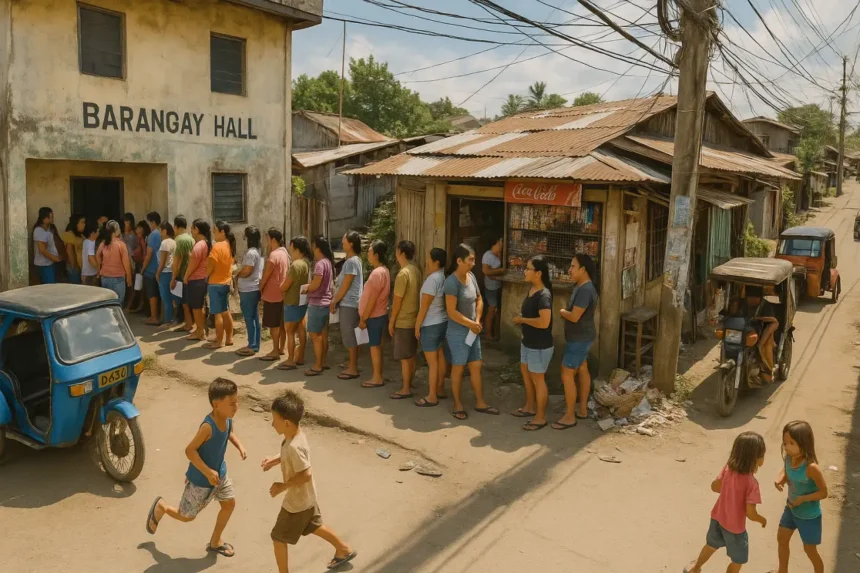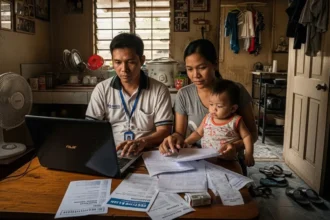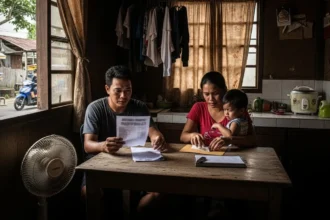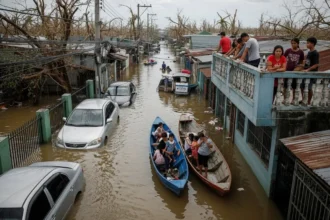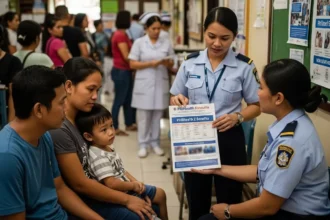Your barangay is supposed to be the closest government unit to your family-the one that fixes your roads, funds health centers, and keeps the community safe. But when corruption takes root at this level, those promises often remain just words on paper.
- 1. Extra Fees for Barangay Clearance and Documents
- 2. Overpriced Barangay Permits for Small Businesses
- 3. Ghost Projects and Missing Funds
- 4. Hidden Charges During Barangay Fiestas
- 5. Inflated Emergency or Disaster Funds
- 6. Skimmed Health Budgets
- 7. Education Support That Disappears
- 8. Road Repairs That Never Last
- 9. “Donation” Systems for Barangay Projects
- 10. Election Season Spending Tricks
- Frequently Asked Questions about Barangay Corruption and Family Budgets
- 🧭 References
Instead of free medicines, you buy them out of pocket. Instead of safe and passable streets, you spend more on transport or car repairs. And instead of fair permits for your small negosyo, you’re charged hidden fees that eat away at your starting capital. Barangay corruption in the Philippines doesn’t just erode trust in local leaders-it directly impacts your personal finance goals.
Every peso siphoned off by barangay corruption is a peso less for your child’s school needs, your grocery budget, or your ipon for the future. This article will break down the Top 10 ways barangay corruption silently drains the average Filipino family’s budget-and show you how to stay financially prepared despite these hidden costs.
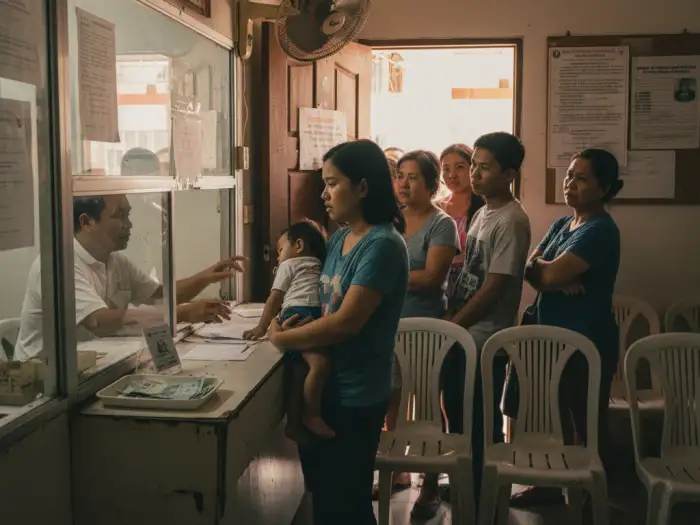
1. Extra Fees for Barangay Clearance and Documents
Barangay clearances and certificates are supposed to be simple, affordable requirements. They’re needed for job applications, small business permits, IDs, or even enrolling your kids in school. Officially, the fee is minimal-set by ordinance and posted publicly. But in many barangays, Filipinos quietly encounter “extra charges” that aren’t written anywhere.
🛑 How It Usually Happens
- “Processing fee” or “service charge” suddenly added on top of the official rate.
- “Rush fee” if you need the document quickly, even though processing time should be the same.
- “Donation” for barangay projects or fiestas slipped in when you’re about to pay.
- Lack of receipt-or issuance of a generic slip with no breakdown of charges.
💸 Why It Hurts Your Budget
These amounts may look small-₱50 here, ₱100 there-but they accumulate fast. For families who need clearances multiple times a year (for school, work, or negosyo), that’s hundreds to thousands of pesos drained annually. Money that could’ve gone to your grocery budget, ipon challenge, or even your child’s school allowance.
✅ What You Can Do
- Check official fees: Barangay clearance fees are governed by the Local Government Code of 1991 (RA 7160). Each barangay must pass an ordinance setting fees-and they must be posted publicly.
- Always ask for an Official Receipt (OR): This is your best defense against “extra” collections. If no OR is given, that’s a red flag.
- Report irregularities: You can file complaints with the Department of the Interior and Local Government (DILG) or the Office of the Ombudsman.
- Plan ahead: Apply for documents early to avoid being pressured into paying “rush fees.”
- Community approach: If multiple residents notice the same illegal fees, raise it in the barangay assembly. Leaders are required by law to answer to constituents.
⚖️ Is It Legal?
No. Collecting charges not covered by ordinance is considered illegal exaction under the Revised Penal Code and may fall under corrupt practices penalized by the Anti-Graft and Corrupt Practices Act (RA 3019). Filipinos are legally protected, though enforcement can be tricky at the barangay level-this is why documentation (receipts, records) matters.
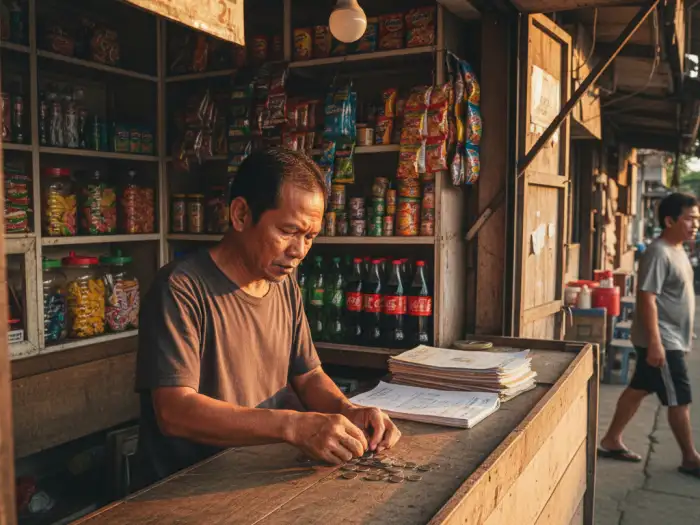
2. Overpriced Barangay Permits for Small Businesses
Starting a small negosyo should be challenging enough without unnecessary costs. But in many communities, barangay permits for small businesses-like sari-sari stores, carinderias, food carts, or tricycle operations-often come with inflated fees that go beyond what local ordinances actually require.
🛑 How It Usually Happens
- “Add-ons” to official permit fees: business owners are told to pay more than the posted amount, without receipts.
- Annual renewal “extras”: aside from the legitimate renewal fee, some barangay offices ask for contributions or “donations.”
- Unequal charges: different rates for different people, depending on who you know or whether you ask questions.
- Package deals: barangay clearance bundled with unnecessary documents, each with a fee.
💸 Why It Hurts Your Budget
For micro-entrepreneurs who run on thin margins, every peso counts. An additional ₱500 or ₱1,000 in inflated fees means:
- Less capital to buy inventory.
- Lower take-home income in the first few months of business.
- Higher debt if you had to borrow money to start.
Barangay corruption in permits directly stalls small business growth-and for families relying on this income, it means tighter budgets and slower savings.
🛠️ What You Can Do
- Know the law: Under the Local Government Code of 1991 (RA 7160), barangay fees must be set by ordinance and posted publicly. If the amount isn’t posted, you have the right to ask for it.
- Ask for receipts: Always demand an Official Receipt (OR). Without it, extra fees can’t be justified.
- Verify with the municipality: Business permits usually require coordination with the municipal or city hall-cross-check their fee schedules to avoid being overcharged at the barangay level.
- Join local business groups: Entrepreneurs’ associations often push back against irregular fees more effectively than individuals.
⚖️ Is It Legal?
No. Charging fees not covered by ordinance can be considered illegal exaction and may fall under the Anti-Graft and Corrupt Practices Act (RA 3019). Every Filipino business owner has the right to challenge unfair charges.
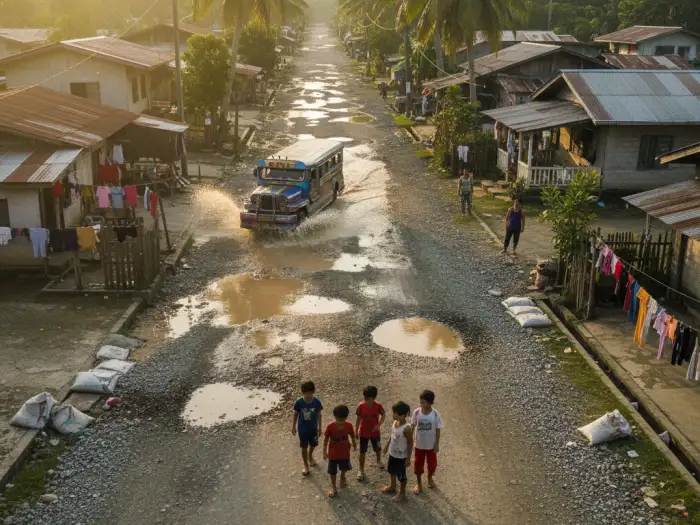
3. Ghost Projects and Missing Funds
Every barangay is given a share of the budget for local infrastructure-roads, drainage, streetlights, multipurpose halls. These projects are supposed to make daily life easier. But when corruption steps in, many turn into “ghost projects”-announced with fanfare but never completed, or worse, never started at all.
🚧 How It Usually Happens
- Grand launching but no follow-through: tarpaulins and ceremonies, but work stops after a few weeks.
- Repeat repairs: the same road, canal, or waiting shed is “fixed” every year, draining funds.
- No transparency: project budgets aren’t posted, or progress reports are hidden from residents.
- Cut corners: cheap materials used, leading to quick wear and tear.
💸 Why It Hurts Your Budget
- Transport costs rise: poor roads mean higher tricycle/jeepney fares and more vehicle repairs.
- Household expenses go up: families pay for drainage fixes, flood cleanups, or lighting replacements themselves.
- Lost opportunities: money wasted on ghost projects means less funding for scholarships, daycare, or health programs-costs families end up shouldering.
🛠️ What You Can Do
- Ask for reports: Barangays are required to present Annual Investment Plans and completion reports during assemblies. Don’t be afraid to request copies.
- Document issues: take photos of unfinished projects and keep a record of dates, budgets (if known), and names of officials.
- Escalate complaints: report recurring project failures to your city/municipal engineering office, or file complaints with the Commission on Audit (COA) or DILG.
- Community pressure: organize with neighbors-collective action often forces accountability faster than individual complaints.
⚖️ Is It Legal?
No. Misuse of public funds and failure to implement approved projects can fall under graft and corruption cases. Barangay officials can be held liable under the Anti-Graft and Corrupt Practices Act (RA 3019) and Local Government Code. Residents are well within their rights to demand transparency.
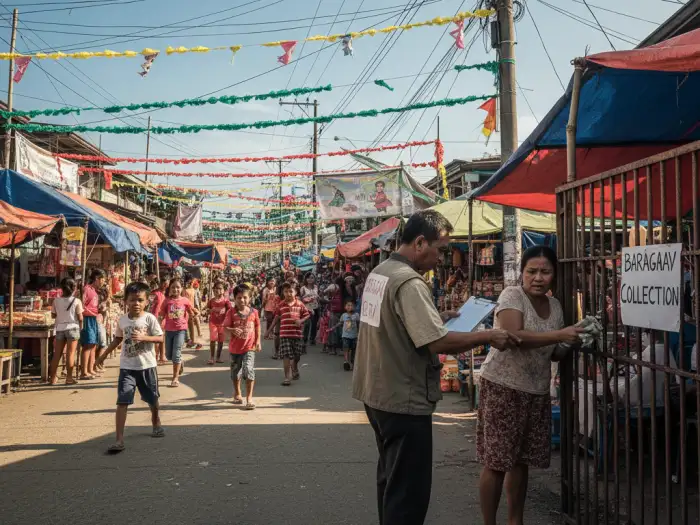
4. Hidden Charges During Barangay Fiestas
Fiestas are a cherished Filipino tradition-colorful celebrations that bring the whole community together. But in some barangays, corruption hides behind the joy. Residents are sometimes pressured to give “mandatory donations” or contribute extra cash for programs, food, or prizes-regardless of whether they can afford it.
🎉 How It Usually Happens
- “Voluntary” contributions that aren’t really voluntary: every household is expected to give a fixed amount.
- Collection for prizes or shows: residents are told their money will fund entertainment, but no breakdown is given.
- Fundraising drives with no receipts: cash is collected door-to-door, and residents never see the accounting.
- Double charging: families already contributing through barangay funds are still asked to pay separately.
💸 Why It Hurts Your Budget
- Unplanned expenses: ₱200 to ₱1,000 per household can wipe out money set aside for groceries or bills.
- Pressure to overspend: families spend more to avoid being labeled “kuripot” or unsupportive.
- Savings derailed: fiesta contributions eat into ipon challenges or debt payments.
🛠️ What You Can Do
- Set a fiesta budget: decide how much you can really afford-stick to it no matter the pressure.
- Ask for transparency: contributions should have a clear breakdown and receipt.
- Pool resources wisely: suggest in-kind donations (food, decorations) instead of cash, so spending is visible.
- Stand with neighbors: if several families push back together, it’s harder for officials to pressure individuals.
⚖️ Is It Legal?
Barangay officials cannot force residents to give money outside what is legally collected by ordinance. “Voluntary contributions” must remain truly voluntary. Forcing payments without receipts can be reported to the DILG or Ombudsman, and barangay officials risk administrative charges.
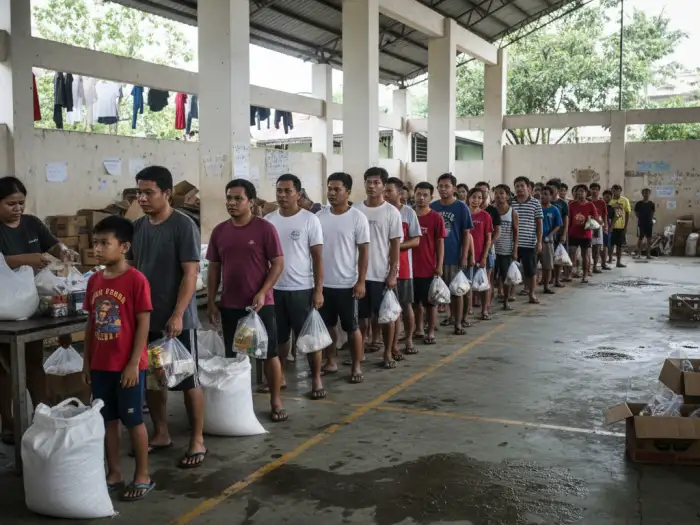
5. Inflated Emergency or Disaster Funds
Barangays are the first responders during calamities-whether it’s typhoons, floods, or fires. Funds are allocated to help communities recover. But corruption often creeps in, and residents end up paying more from their own pockets when relief is delayed, reduced, or overpriced.
🌪️ How It Usually Happens
- Relief goods “shortage”: fewer items distributed than what was officially procured.
- Overpriced supplies: rice, canned goods, or tarpaulins purchased at inflated prices.
- Unequal distribution: families without political ties receive less or none at all.
- Ghost beneficiaries: supplies listed under names that don’t exist.
💸 Why It Hurts Your Budget
- Families shoulder recovery costs: medicine, food, and temporary shelter bought with personal money.
- Emergency savings drained: households forced to use ipon meant for other goals.
- Increased debt risk: some resort to utang (loans) to cover immediate needs.
🛠️ What You Can Do
- Document distribution: take photos/videos when relief operations happen in your barangay.
- Verify lists: check if your family is properly listed among recipients.
- Strengthen your emergency fund: don’t rely solely on relief goods; prepare 1–2 weeks’ worth of supplies if possible.
- Report anomalies: complaints can be filed with the DILG, COA, or Ombudsman, especially if relief consistently goes missing.
⚖️ Is It Legal?
No. Overpricing and misappropriation of calamity funds are violations under the Anti-Graft and Corrupt Practices Act (RA 3019) and can also be grounds for administrative sanctions. Residents are entitled to fair and equal distribution of aid.
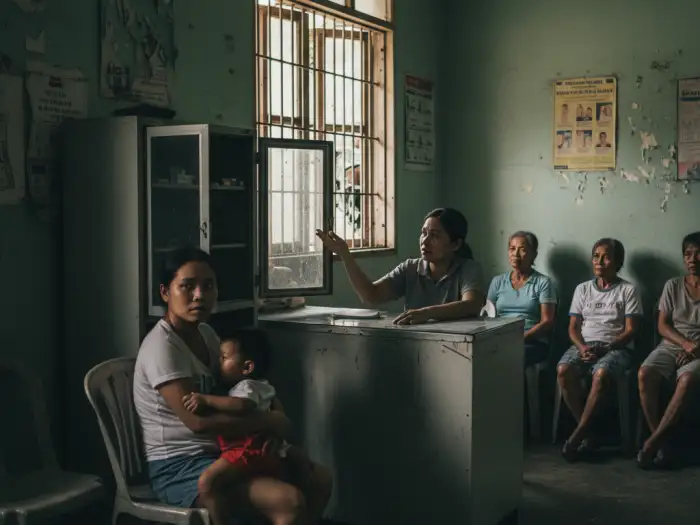
6. Skimmed Health Budgets
Barangay health centers are supposed to be the first stop for families-whether it’s a free check-up, affordable medicines, or vaccination for kids. But when corruption diverts health funds, residents are left paying out-of-pocket for services that should have been free.
🏥 How It Usually Happens
- Medicines “out of stock”: supplies purchased with barangay funds but mysteriously unavailable.
- Ghost purchases: budget allocated for drugs and equipment, but items never arrive.
- Selective treatment: only certain families receive free medicines or services.
- Low-quality supplies: expired or substandard medicines bought cheaply but billed at higher prices.
💸 Why It Hurts Your Budget
- Higher medical bills: families buy medicines at private pharmacies instead of getting them free.
- Lost work days: untreated illnesses force parents to miss work, reducing income.
- Added transport costs: patients travel to city hospitals instead of relying on the barangay clinic.
- Strained savings: ipon meant for school or emergencies ends up spent on health expenses.
🛠️ What You Can Do
- Check posted inventories: health centers are supposed to display available medicines-ask if they don’t.
- Use PhilHealth and local health programs: maximize benefits to reduce out-of-pocket costs.
- Join barangay assemblies: demand transparency on health budget spending.
- Report anomalies: missing medicines or ghost projects can be reported to the DOH regional office, DILG, or Ombudsman.
⚖️ Is It Legal?
No. Misusing health funds or failing to provide medicines despite budget allocation can fall under malversation of public funds and violations of the Anti-Graft and Corrupt Practices Act (RA 3019). Residents are entitled to accessible, affordable primary health care at the barangay level.
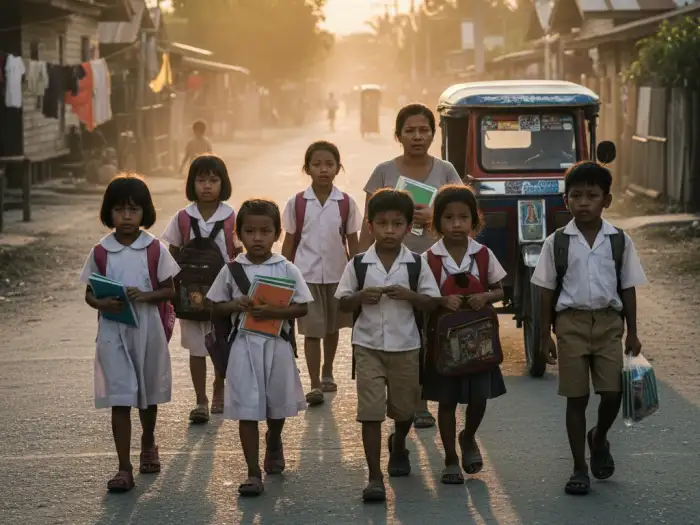
7. Education Support That Disappears
Barangays often promise scholarships, free school supplies, or funding for daycare centers. These programs are meant to help lighten the financial load of parents. But when funds mysteriously disappear or are diverted, families are left to cover all the costs on their own.
🎓 How It Usually Happens
- Scholarships that never materialize: students apply, get “approved,” but funds are not released.
- School supplies vanish: budget for free notebooks, uniforms, or bags is announced but not delivered.
- Daycare centers underfunded: facilities lack materials or staff, forcing parents to shoulder expenses.
- Favoritism: benefits only given to families close to barangay officials.
💸 Why It Hurts Your Budget
- Extra school costs: parents pay for supplies that were supposed to be free.
- Tuition burden: without scholarships, full tuition and fees come from family income.
- Daycare fees: parents forced to pay private centers or stay home, affecting household earnings.
- Savings setbacks: ipon intended for other goals gets redirected to education expenses.
🛠️ What You Can Do
- Check official lists: barangays must publish lists of scholarship recipients and supply beneficiaries.
- Ask for liquidation reports: education funds must be accounted for in barangay assemblies.
- Explore alternative aid: apply for NGO, church, or LGU-level programs to diversify support.
- Band together: parents can collectively demand transparency if promised assistance is not delivered.
⚖️ Is It Legal?
No. Misusing education funds or failing to deliver promised benefits can be considered misappropriation of public funds. Under the Local Government Code and Anti-Graft and Corrupt Practices Act (RA 3019), barangay officials can be held accountable for unliquidated or missing education allocations.
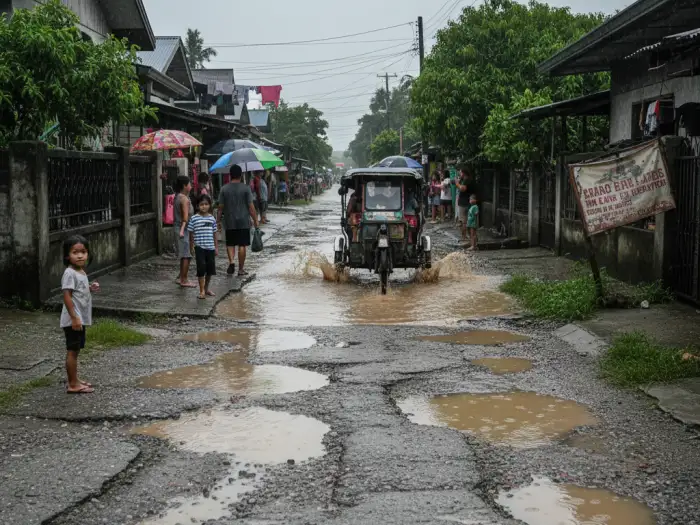
8. Road Repairs That Never Last
Barangay roads are lifelines for families-used daily for commuting to school, work, or the palengke. But in many places, road repairs seem endless. Projects are launched every year, yet the same stretch of road breaks down within months. This cycle often points to corruption and poor-quality work that ends up costing residents more.
🛣️ How It Usually Happens
- Substandard materials: cheap gravel or asphalt used to cut costs, causing the road to deteriorate quickly.
- Endless “repairs”: the same road is fixed repeatedly, draining the budget each year.
- Incomplete work: repairs stop halfway, leaving roads partially dangerous.
- No public posting: project costs and contractors are not disclosed to residents.
💸 Why It Hurts Your Budget
- Higher commuting costs: tricycles and jeepneys charge more for routes with bad roads.
- Vehicle wear and tear: car owners pay more for tire, suspension, and alignment repairs.
- Lost productivity: delays in commuting mean fewer hours at work or school.
- Added household expenses: flooding and muddy access roads force families to spend on boots, extra cleaning, or temporary fixes.
🛠️ What You Can Do
- Monitor repairs: take photos before and after projects to document quality.
- Check the project board: contractors and costs should be publicly posted; if missing, ask.
- Raise issues in assemblies: barangays are required to present infrastructure plans and reports.
- Report anomalies: recurring repairs can be escalated to the Commission on Audit (COA) and municipal engineering offices.
⚖️ Is It Legal?
No. Cutting corners or misusing funds for infrastructure can fall under graft, corruption, and misrepresentation. Barangay officials and contractors may be held liable under the Anti-Graft and Corrupt Practices Act (RA 3019) and related procurement laws.
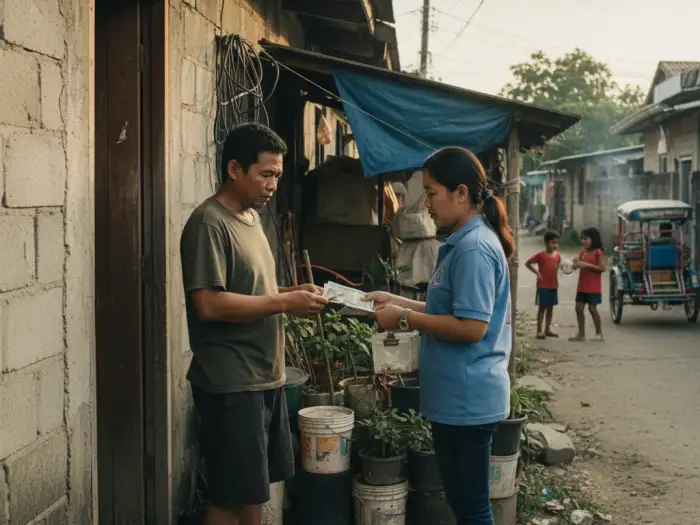
9. “Donation” Systems for Barangay Projects
Some barangay projects-like building a basketball court, repainting the hall, or buying sound systems-are framed as community efforts. While genuine bayanihan is a Filipino strength, corruption starts when residents are pressured into giving “donations” that feel more like mandatory collections.
💰 How It Usually Happens
- Mandatory “donations”: every household is told to contribute a fixed amount.
- Double collection: projects already funded by barangay money still ask for resident contributions.
- No transparency: funds are collected in cash, but residents never see a breakdown of expenses.
- Selective pressure: those who refuse are shamed or excluded from barangay activities.
💸 Why It Hurts Your Budget
- Unplanned leaks: ₱100 to ₱1,000 per project can quickly drain your monthly allowance.
- Household strain: families skip essentials (like food or school needs) just to comply.
- Savings setbacks: repeated contributions derail ipon goals or emergency fund building.
🛠️ What You Can Do
- Clarify funding: ask if the project is already included in the barangay budget.
- Request receipts: contributions should always have documentation.
- Stick to your budget: only give what you can truly afford; don’t let social pressure dictate spending.
- Organize with neighbors: collectively ask for transparency before giving more funds.
⚖️ Is It Legal?
Barangay officials cannot force donations-collections outside the approved budget are not lawful. Coercion and misuse of community funds may be reported to the DILG or Office of the Ombudsman. Transparency is a resident’s right under the Local Government Code.
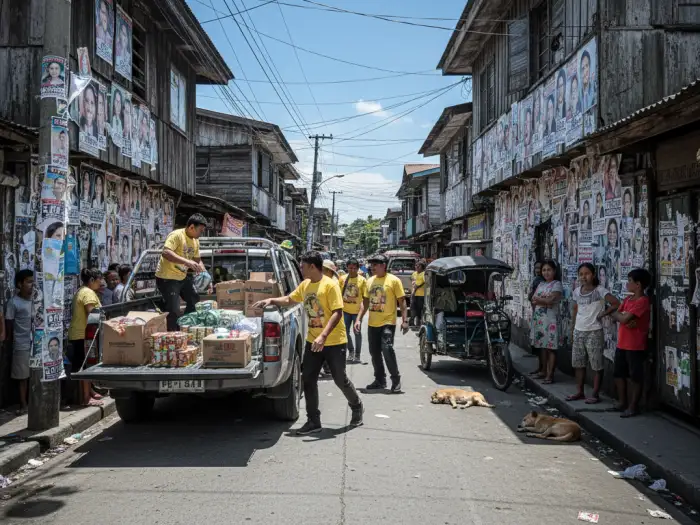
10. Election Season Spending Tricks
Every election cycle, barangay officials are expected to stay non-partisan. But in reality, many barangay budgets are quietly redirected to support campaigns-whether for their own re-election or for allies. This misuse of funds leaves families and communities to cover the gaps when projects and services suddenly stall.
🗳️ How It Usually Happens
- Budget freeze on services: funds meant for health, education, or infrastructure are held back and “saved” for election spending.
- Barangay resources used for campaigns: vehicles, fuel, or equipment are diverted to political activities.
- Favoritism in aid distribution: relief goods or benefits are handed out only to supporters.
- Vote-buying disguised as ayuda: cash or goods given near election day, sourced from barangay funds.
💸 Why It Hurts Your Budget
- Interrupted services: families pay more out-of-pocket for healthcare, school, or road repairs when barangay funds are withheld.
- Unfair distribution: non-supporters miss out on benefits, forcing them to shoulder extra costs.
- Long-term damage: wasted funds mean less investment in projects that could improve livelihoods.
🛠️ What You Can Do
- Stay vigilant: monitor barangay projects and budgets closely during election years.
- Document misuse: photos, videos, or testimonies are powerful when reporting irregularities.
- Report violations: complaints may be filed with COMELEC, DILG, or the Ombudsman.
- Focus on financial resilience: don’t rely solely on barangay ayuda-maintain a personal emergency fund to weather these gaps.
⚖️ Is It Legal?
No. Using barangay funds or resources for electioneering is a violation of election laws (Omnibus Election Code) and can lead to administrative, civil, and even criminal charges. Residents are fully protected by law to report and oppose such practices.
Frequently Asked Questions about Barangay Corruption and Family Budgets
- What is barangay corruption and why does it matter to ordinary Filipinos?
Barangay corruption refers to the misuse of local funds or abuse of authority at the community level. It matters because every peso lost through ghost projects, overpriced permits, or illegal fees is a peso taken directly from Filipino households-money that could have gone to groceries, tuition, or savings. - How does barangay corruption in the Philippines affect my personal finances?
It raises everyday expenses-like paying more for permits, transport, or health services. Families end up shouldering costs that should have been covered by barangay funds, leaving less room for saving money or paying debts. - Is it legal for barangay officials to ask for extra fees?
No. Barangay fees must be set by ordinance under the Local Government Code of 1991 (RA 7160). Collecting money outside the approved schedule is considered illegal exaction and may fall under the Anti-Graft and Corrupt Practices Act (RA 3019). - What can I do if I’m being asked to pay unofficial barangay fees?
Always ask for an Official Receipt (OR) and check the posted fee schedule. If the amount doesn’t match, you can raise the issue during barangay assemblies or file a complaint with the DILG or Ombudsman. - How can barangay corruption impact small businesses like sari-sari stores?
Inflated permit costs eat into small entrepreneurs’ starting capital and profits. For many micro-businesses that operate on tight margins, these “extra fees” can delay growth and make it harder for families to rely on the business as a steady income source. - What laws protect Filipinos from barangay corruption?
The Local Government Code (RA 7160) governs fees and transparency, while the Anti-Graft and Corrupt Practices Act (RA 3019) penalizes corrupt practices. The Revised Penal Code also criminalizes illegal collections and misuse of public funds. - Can barangay corruption affect community services like health and education?
Yes. Misused health funds mean medicines and checkups are unavailable, forcing families to spend more at private clinics. Missing education support-like scholarships or daycare supplies-pushes parents to cover all costs themselves. - What practical steps can families take to protect their budget from barangay corruption?
Track household expenses carefully, anticipate small “barangay extras” in your budget, and maintain an emergency fund. Families should also participate in assemblies, request transparency reports, and join neighbors in demanding accountability. - Where can I report corruption in my barangay?
You can file complaints with the Department of the Interior and Local Government (DILG), Commission on Audit (COA), or the Office of the Ombudsman. Providing documentation-like receipts, photos, or testimonies-makes cases stronger. - Why should personal finance articles talk about barangay corruption?
Because corruption isn’t just a political issue-it directly affects how much money Filipino families can save or invest. Treating it as part of personal finance empowers readers to see the connection between governance and their financial stability.
Barangay corruption in the Philippines isn’t just about politics or governance-it’s about pesos slipping quietly out of every Filipino family’s wallet. Whether it’s through overpriced permits, ghost projects, or missing community services, these hidden leaks directly weaken your ability to save, budget, and build a secure financial future.
But awareness is the first step. By knowing how corruption operates at the barangay level, you can prepare, protect your budget, and push for transparency. Every receipt you ask for, every question you raise in a barangay assembly, and every peso you guard against misuse contributes not only to your personal finance journey but also to a culture of accountability in your community.
At the end of the day, personal finance is not just about ipon, budgeting, or investing-it’s also about defending your right to fair and honest services. Protect your money, protect your future, and demand the governance your family truly deserves.
🧭 References
-
Philippine News Agency – Dy highlights role of barangay leaders in fight vs. corruption
-
Inquirer – Vico Sotto warns corrupt barangay officials in Pasig
-
Prif Blog – Déjà Vu: The Flood of Corruption Engulfs the Philippines
-
Business Inquirer – Corruption: An enduring reign of greed
-
Jagna.gov.ph – The Battle for Billions in Barangay Funds
-
Mindanao Times – World Travel Index: Davao City is Philippines’ second safest
-
Grant Thornton PH – Economic Effects of Corruption



